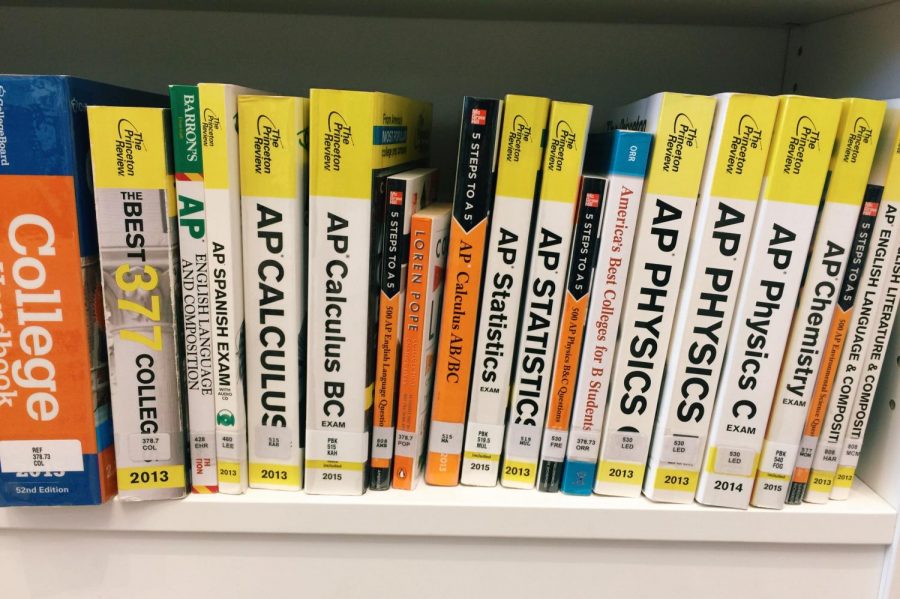Part 2: AP Classes
May 17, 2017
In the 2000-2001 school year, 844,741 students took Advanced Placement (AP) exams according to The College Board, which runs the program.
By last school year, that number had more than tripled to 2,611,172.
The AP program was created in the 1950s to better educate the population, challenging driven students to work at the highest level they can and preparing them for college.
Mark Schuler, who graduated high school in 1984 and has been teaching AP history classes since 2005, said he didn’t even know what AP classes were when he was a student, as only a few high schools in his area offered them.
For most schools around the country today, however, “AP” is no foreign term.
Cambridge High School exemplifies the rise in APs, with 79 percent of students taking at least one AP course according to the school’s website.
Other schools nearby, such as Alpharetta High School (70 percent) and Milton High School (83 percent), have similarly high AP participation rates according to U.S. News.
However, schools farther away in Fulton County show lower AP participation percentages, including Chattahoochee High School (65 percent), Centennial High School (55 percent) and North Springs High School (58 percent).
The increase in the demand for AP courses has led some teachers to change what they do in the classroom.
English teacher Suzanne Wren, who taught AP Language for 10 years and has taught AP Literature for eight years, said she was able to do more and grade faster with smaller classes. In the past, her class might read 12 books in a year, but now they read eight or nine, she said.
“I miss smaller classes because I could reach students better; we were able to connect more,” said Wren. “It’s harder now, but you’re still gonna get the same depth and skill from my class. I’m gonna teach the way I teach, and I love teaching.”
Some teachers said that while AP curricula may not have changed, the students’ reasons for taking AP courses have.
A common motive is to have better chances of getting into college. The number of AP courses a student takes in high school has become a significant factor in the admission process at some schools.
“Before, students wanted to take AP classes for more rigor,” said Randy Gingrich, an AP English Language and Composition teacher for 16 years. “Now, students are taking them because schools are saying have X number of APs.”
That is one of the reasons sophomore Liz Willis plans to take 15 AP classes by the time she graduates.
She said she also takes them for increased rigor and, in the case of AP Psychology, for enjoyment.
“There is stress from my workload, but I can manage,” Willis said.
Sophomore Nishu Pawar said he believes the normal number of AP courses to take is closer to four or five, but he wants to take as many as 13. He said this is mostly for college, but also because harder work causes him to pay more attention and do better in his academics.
Another reason some students take AP classes is status.
Freshman Aarushi Malhotra is enrolled in all on-level classes.
“I do feel there is a judgment from AP class people to people who don’t take AP,” Malhotra said. “And I don’t think people should be judged or be judgmental by what classes they take, so I’ve hung onto that and not really given too much thought to it.”
Schuler said students want to distinguish themselves from others and take APs so they’re not in the “other classes.”
“I think it’s a tsunami,” said Schuler. “Once somebody takes it [AP], the neighbor wants to take it, and then another neighbor wants to, and then the whole subdivision is taking AP.”
I think it’s a tsunami,” said Schuler. “Once somebody takes it [AP], the neighbor wants to take it, and then another neighbor wants to, and then the whole subdivision is taking AP.
— Mark Schuler
Some teachers said this attitude shift regarding AP classes has a positive side, as it leads more students to challenge themselves and gives them more insight and knowledge.
However, the same teachers said they’ve seen many negatives from the change, including stress, anxiety and shame.
“I see stress and anxiety every day — some students more than others. The high-achievement students are working through lunch and on the bus,” said Schuler. “I see students break down.”
Wren also said she has seen the toll of AP on students.
“What I’m really seeing in classes that are really struggling that is breaking my heart is the embarrassment,” said Wren. They’re embarrassed that they’re not doing well and need help. That’s how students feel; they feel angry, frustrated.”
The common piece of advice from some AP teachers has been for each student to take the classes that are right for him or her.
“I think they need to be strategic. What is going to be the purpose of taking the AP; is it for status, college credit, enjoyment?” said Schuler.
“I think they need to know how much is too much,” he said. There is this thing called high school, and you’re only here for four years. And at some point, you guys have to have a high school life.”
